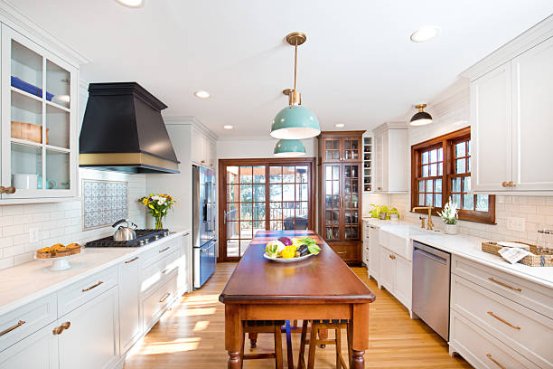Home Improvement
Key Kitchen Design Innovations to Watch in 2025
In 2025, kitchens are evolving into spaces that combine striking design, advanced technology, and sustainable materials. Homeowners are increasingly focused on efficiency, innovation, and eco-friendly solutions in their kitchen remodels.
In 2025, kitchens are evolving into spaces that combine striking design, advanced technology, and sustainable materials. Homeowners are increasingly focused on efficiency, innovation, and eco-friendly solutions in their kitchen remodels.

Sustainable Materials Take the Lead
Eco-conscious design is central to modern kitchens. Materials like bamboo, reclaimed wood, and recycled metals are commonly used for cabinets, countertops, and accents. Low-VOC paints and finishes ensure healthier indoor air without compromising style. Bio-composites that mix natural fibers with durable resins offer strength while reducing environmental impact. Using locally sourced materials also supports community businesses and lowers transportation emissions.
Smart Appliances Enhance Everyday Life
Kitchens are becoming technology-driven command centers. Smart appliances handle tasks like tracking groceries in the fridge or controlling ovens via mobile devices. Voice-activated systems manage lighting, climate, and entertainment. Energy-saving features help reduce utility bills, and meal-planning tools minimize food waste. While these technologies may require higher upfront investment, they offer long-term convenience and efficiency for homeowners.
Open-Concept Design Expands Functionality
Open kitchen layouts remain popular, emphasizing flexibility and social interaction. Half walls, oversized islands, and movable partitions replace traditional barriers. Islands function as prep stations, storage, and social hubs at once. These designs encourage engagement, allowing homeowners to interact with family and guests while cooking, highlighting the desire for adaptable and connected spaces.
Bold Colors and Patterns Refresh Aesthetics
Traditional white cabinets are giving way to deep blues, forest greens, and bold blacks, often paired with statement backsplashes or patterned tiles. Geometric shapes, textured finishes, and vibrant mosaics make kitchens feel personalized. Matte surfaces add warmth, while glossy finishes amplify light. Even small updates, like a contrasting island or decorative backsplash, can revitalize a kitchen without a full renovation.
Multifunctional Spaces for Modern Living
Kitchens are increasingly serving multiple purposes, functioning as workspaces, homework areas, and entertainment zones. Expandable tables, foldable furniture, and adaptable islands maximize utility. Thoughtful zoning separates cooking, prep, and cleaning areas to improve efficiency. These layouts accommodate both productivity and relaxation, reflecting the demands of contemporary lifestyles.
In 2025, kitchens merge bold design, smart technology, and sustainability, redefining the home’s central space into an efficient, stylish, and environmentally responsible hub.
How do you like this article?




